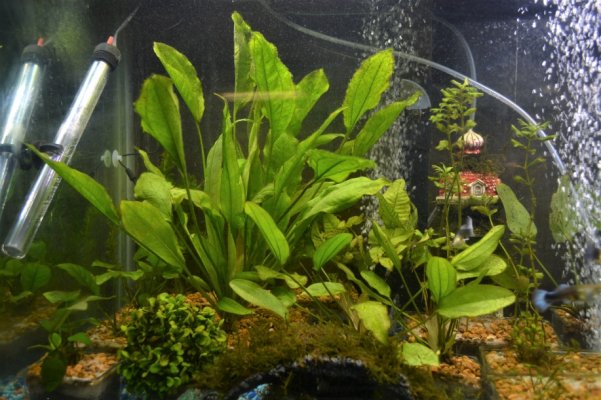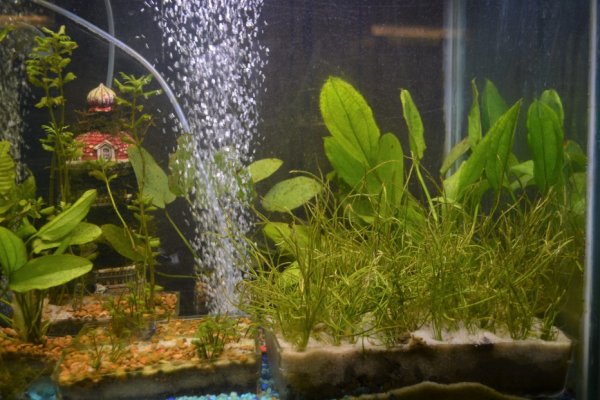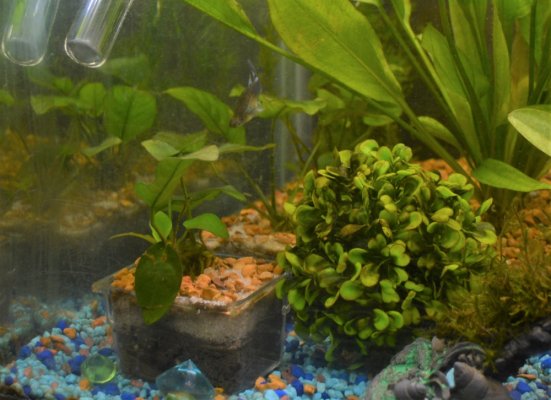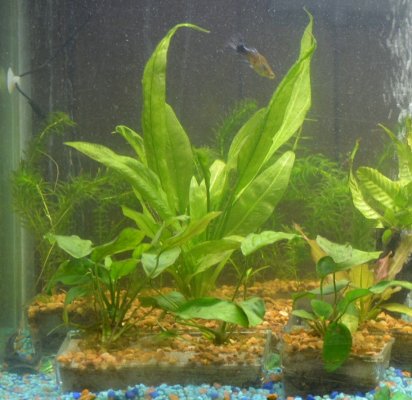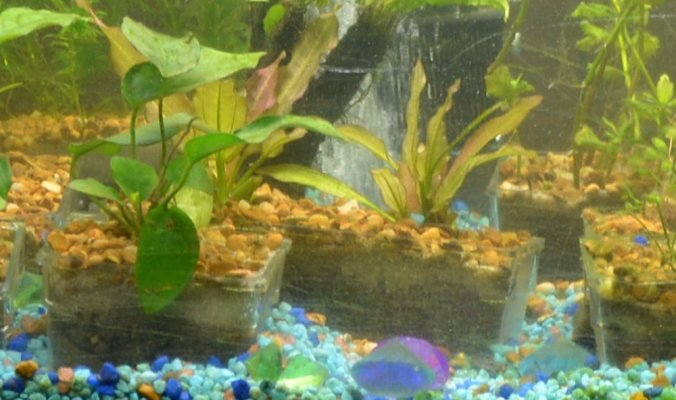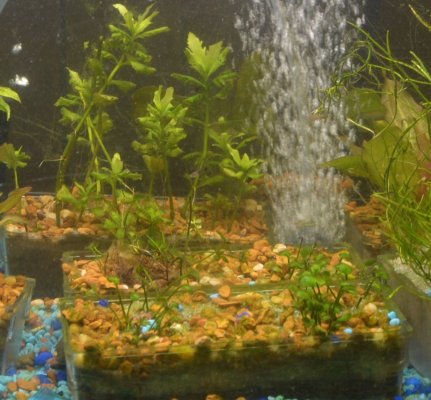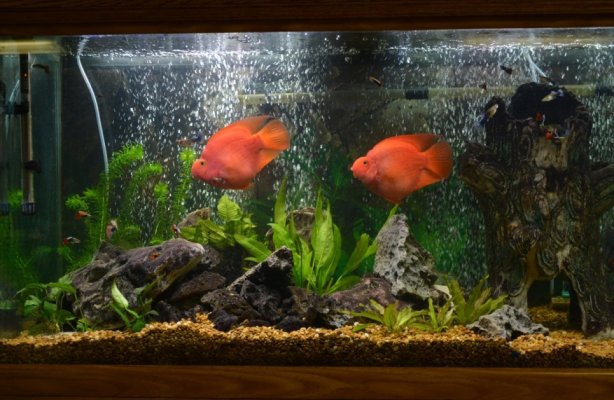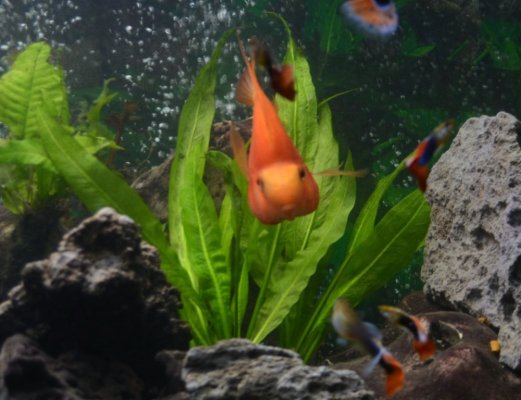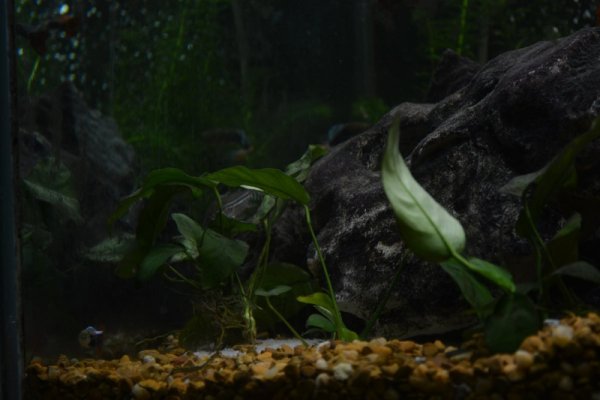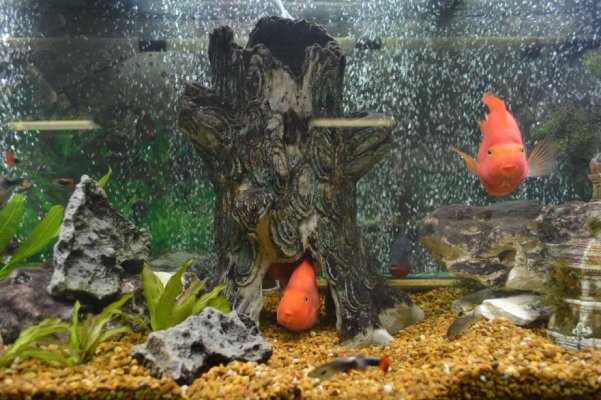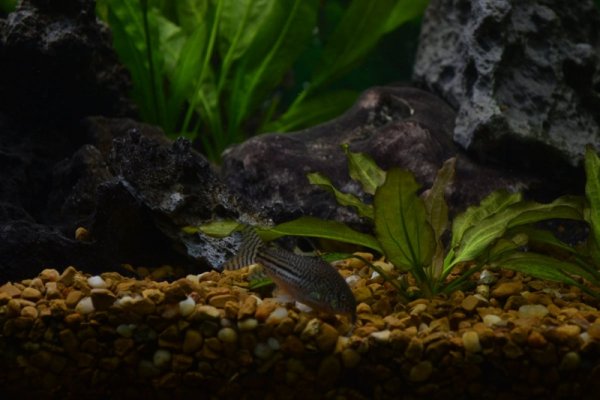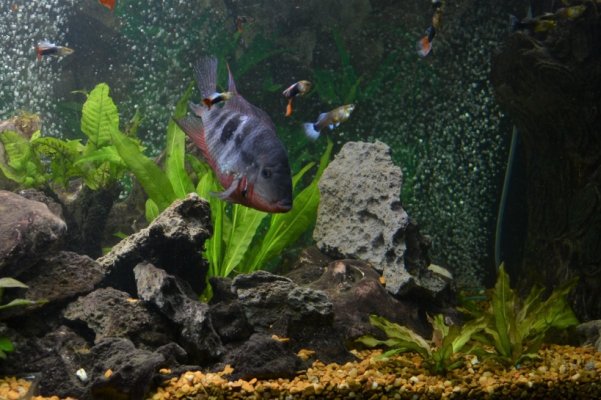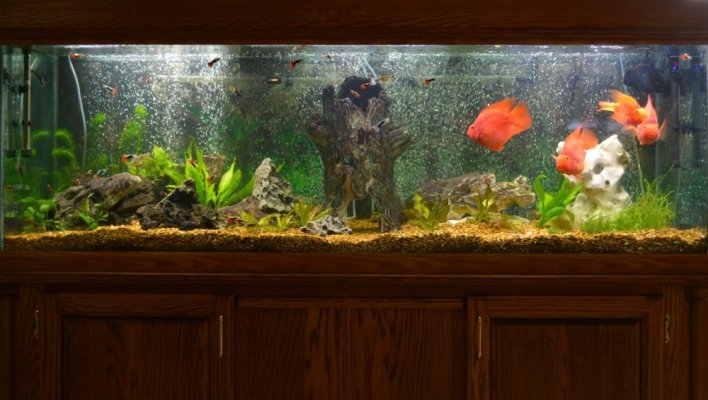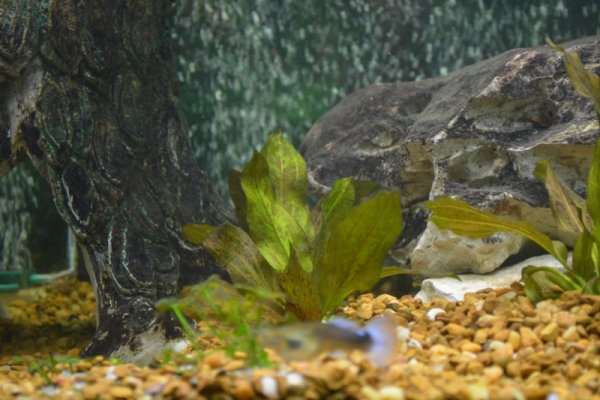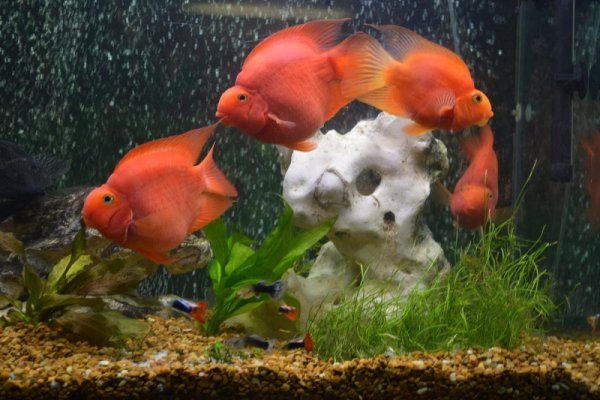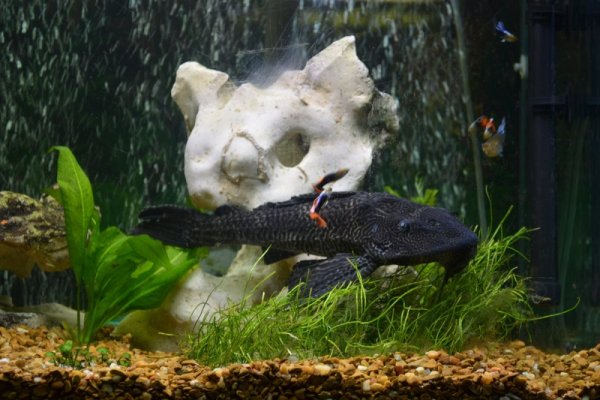Yes, the wisteria (what I think you mean by "stem plant") is by far the slowest to establish and grow. It was also rather poor looking upon receipt with very long leafless stems and only 8 centimeters or so of sparse leafy growth at the ends. I've topped and replanted them as they seem to break off with zero success using my tree trunk fingers but MUCH better using an inexpensive and highly useful aquarium plant tool set purchased about a month ago. Since then the ones embedded to the bottom of the trays with said tools [seem] to be growing nicely.
Please define "not enough CO2". Lots of aeration and surface movement in this tank, a light animal load and it seems lightly planted compared to the amazing photos I see of highly (dare I say over?) planted tanks that surely require lots of CO2 fertilization.
My goal is to nurture healthy, robust plants to move into a large tank as part of a genuine community that is as self-sustaining as possible in an artificial environment.
Well there are many factors involved with co2 and co2 uptake. It’s not a very water soluble gas and it diffuses slowly. The surrounding air has around 400ppm of co2 and co2 has an air diffusion coefficient of 16mm2/s. To travel a 1.6m tank around 100 seconds. The diffusion coefficient of co2 in water is 0.0016mm2/s and for the same tank 11.5 days. So we know water movement is good. But you could still be moving around a very small concentration of co2.
As mentioned surrounding air has around 400ppm of co2 but co2 in equilibrium with pure h2o at a certain temperature at sea level gives you a theoretical value of around 0.5ppm co2. This value is slightly higher in an average fish tank with biological activity but not much. The usual assumption is around 3ppm. High tech keepers aim for 10 x this amount at 30ppm and many natural waters will have between 10-20ppm. If you use a bubbler or high surface agitation you will drive off gases until you establish and equilibrium value. What is being produce against what is being driven off. Tanks with bubblers usually have a low level co2 equilibrium but it is constant. So plants grow but very slowly. But if there is too much light maybe not at all.
Co2 is needed for the plant make sugar which it needs to build mass. When light hits the plant it catalyses a photosynthesis response and ignites the carbon cycle. If you have lots of photons bombarding the plant it needs to find a lot of co2 from somewhere. Otherwise it will photo-respire and wither away/starve.
Many (95%) of the plants we keep are semi aquatic, so they will endure seasonal flooding. Mostly they are exposed to 400ppm in the surrounding air and have stomata to move gases in and out. When underwater the plants do not have stomata. Instead, their evolutionary tactic is to diffuse gases through their leaves. Flow helps gases overcome the leaf boundary layer and enter the plant but the plants must also grow new leaves without the waxy cuticle and produce more ‘co2 catching’ enzymes. This is in itself a very energy intense process and plants will often melt or lose their previous leaves over time before the new leaves come through. Plants with larger leaves and strong root systems have better contact with moving water and will take up more co2.
Initially, soil tanks release a lot of carbon because there is a lot of organic waste breakdown, a lot of microbes etc. If you have lots of large fish they will release co2 as will their waste and any uneaten food. If you have use a commercial ‘soil’ there’s probably no organic matter and it is just high in nutrient content so maybe less co2.
Taking all that in to consideration you need think about the plant itself. It’s needs for whatever reason are not being met. This is why we have the usual ‘low tech’ plants or non demanding plants. Some of which float and access co2 directly from the air. And even amongst the low tech varieties you will have winners and losers.
One saving grace is that the majority of plants prefer harder water and can use carbonates as their carbon source though I believe it must be converted in to co2 first before it enters the calvin cycle. Again energy intensive.
When I used garden soil I never had to worry about carbonates or some of the rock minerals, calcium, magnesium. Now with sand only I add calcium carbonate in the form of crushed coral, and use occasional doses of dolomite powder CaMgCo3 which provides calcium, magnesium and carbonates. This with other fertiliser dosing has rejuvenated my sword plants. Which nutrient it was exactly is a mystery which is why it is better to supply all. You must know what your water supply has or more importantly what it doesn’t as well as your substrate.
Then the last caveat is the fauna. Capturing or raising co2 levels in low tech tanks usually comes at a cost to oxygen. If you reduce the surface agitation you lose oxygen supplementation. If you add more fish the oxygen demand rises. If you add organic matter oxygen is drained massively.
If you want to keep the bubbler for your fish but want to provide carbon for plants and don’t want to inject use carbonates and carbonate loving plants. Then supply all the plant essential minerals. It’s the safest way. Those in Southern UK and most parts of the USA tend to have hard water and a weekly water change could be all that is required. Thats why there are so many routes to success and so many reasons for failure and why lots of wrong conclusions are drawn whether in success or failure. We all have different starting points and we need to fill in the gaps. Its finding out what should fill that gap that is the hardest part. But I’m almost convinced more of us don’t know why we succeed than why we fail.
Good luck.


